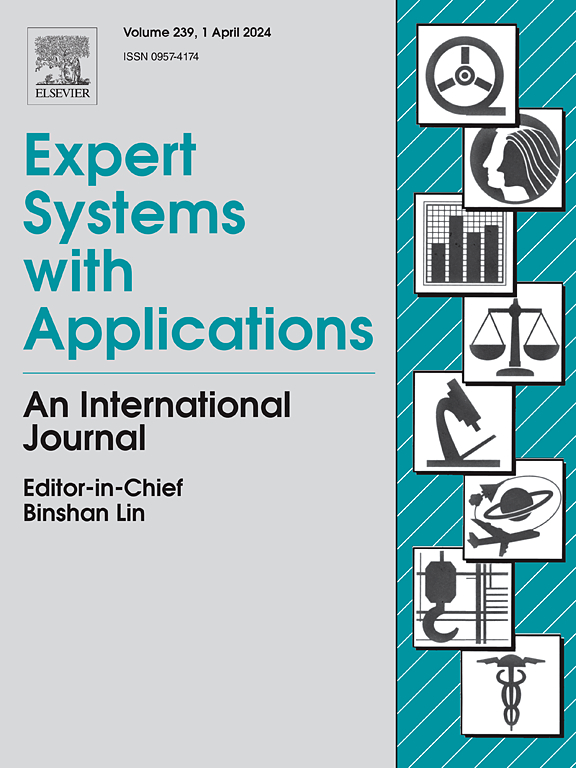Numerical computation of Cross nanofluid model using neural network and Adaptive Neuro-Fuzzy Inference system with statistical insights for enhanced flow optimization
IF 7.5
1区 计算机科学
Q1 COMPUTER SCIENCE, ARTIFICIAL INTELLIGENCE
引用次数: 0
Abstract
In this study, we present a novel integration of numerical methodologies and advanced computational intelligence to elucidate the dynamics of cross nanofluid flow over a Riga plate through a Darcy-Forchheimer porous medium. Brownian motion and thermophoretic phenomena are considered, along with the impacts of activation energy. Slip velocities, convective, and zero-flux boundary conditions are taken into account in the 3D cross nanofluid flow model in the presence of gyrotactic microorganisms. The non-linear PDE model is transformed into a highly non-linear ODE system using von Kármán similarity variables. Taking advantage of Python-derived numerical data as a foundational dataset from the system of non-linear ODEs, we employ neural network algorithms to refine and predict flow behaviors under varying conditions. The research progresses by contrasting these predictions with empirical observations, providing a rigorous validation framework. Furthermore, we incorporate the Adaptive Neuro-Fuzzy Inference System (ANFIS) alongside statistical analyses to examine the impacts of physical parameters, offering unparalleled insight into nanofluid mechanics. This multifaceted approach not only bridges theoretical and practical aspects of fluid dynamics but also proposes a robust model for predicting nanofluid behavior, poised to catalyze advancements in thermal engineering and nanotechnology applications. The precision and adaptability of our methodology underscore its potential as a cornerstone in future fluid dynamics research, inviting scrutiny and discussion from esteemed peers in the field. We have validated our model by finding various sets of error estimations. Furthermore, the velocity profile increases with the enhancement of the Hartmann number or magnetic parameter while decreasing with higher values of the Weissenberg number. The temperature profile decreases with increasing estimates of thermal stratification and the Biot number. The concentration profile amplifies with the Brownian motion parameter while decreasing against the thermophoresis parameter.
利用神经网络和自适应神经模糊推理系统对交叉纳米流体模型进行数值计算,并结合统计学见解加强流动优化
在本研究中,我们提出了一种新颖的数值方法与先进计算智能的整合,以阐明里加板上的交叉纳米流体流经达西-福克海默多孔介质的动力学。研究考虑了布朗运动和热泳现象,以及活化能的影响。三维交叉纳米流体流动模型考虑了滑动速度、对流和零流量边界条件,并存在陀螺仪微生物。利用 von Kármán 相似变量将非线性 PDE 模型转换为高度非线性 ODE 系统。利用 Python- 导出的数值数据作为非线性 ODE 系统的基础数据集,我们采用神经网络算法来完善和预测不同条件下的流动行为。通过将这些预测与经验观察进行对比,提供了一个严格的验证框架,从而推动了研究的进展。此外,我们还将自适应神经模糊推理系统(ANFIS)与统计分析相结合,检查物理参数的影响,为纳米流体力学提供无与伦比的洞察力。这种多方面的方法不仅连接了流体力学的理论与实践,还提出了预测纳米流体行为的强大模型,有望推动热能工程和纳米技术应用的进步。我们方法的精确性和适应性凸显了其作为未来流体动力学研究基石的潜力,并邀请该领域德高望重的同行进行审查和讨论。我们通过发现各种误差估算集来验证我们的模型。此外,速度曲线随着哈特曼数或磁参数的增加而增加,而随着魏森堡数值的增加而减小。温度曲线随着热分层和比奥特数估计值的增加而减小。浓度曲线随布朗运动参数的增大而增大,随热泳参数的增大而减小。
本文章由计算机程序翻译,如有差异,请以英文原文为准。
求助全文
约1分钟内获得全文
求助全文
来源期刊

Expert Systems with Applications
工程技术-工程:电子与电气
CiteScore
13.80
自引率
10.60%
发文量
2045
审稿时长
8.7 months
期刊介绍:
Expert Systems With Applications is an international journal dedicated to the exchange of information on expert and intelligent systems used globally in industry, government, and universities. The journal emphasizes original papers covering the design, development, testing, implementation, and management of these systems, offering practical guidelines. It spans various sectors such as finance, engineering, marketing, law, project management, information management, medicine, and more. The journal also welcomes papers on multi-agent systems, knowledge management, neural networks, knowledge discovery, data mining, and other related areas, excluding applications to military/defense systems.
 求助内容:
求助内容: 应助结果提醒方式:
应助结果提醒方式:


